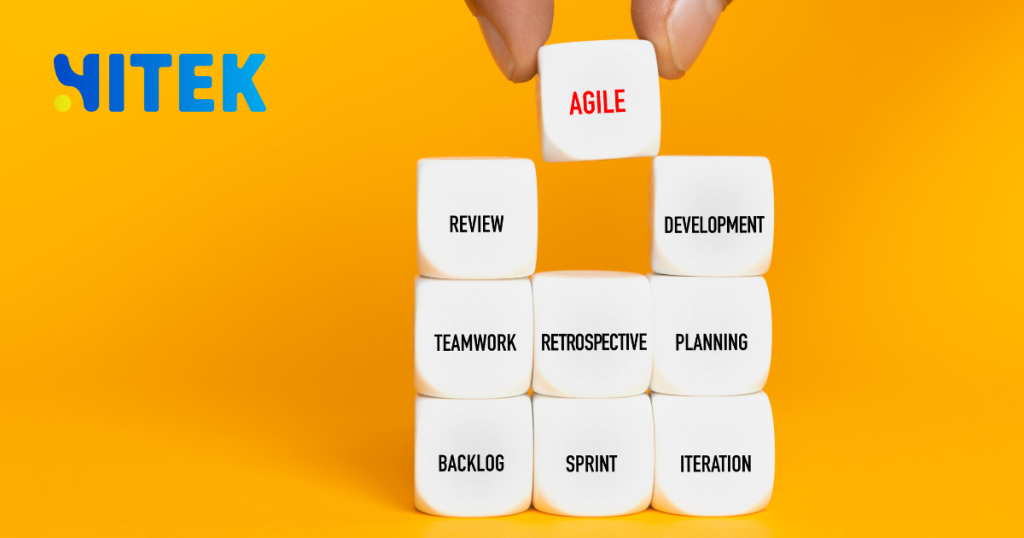Agile software development has become the go-to methodology for teams aiming to deliver high-quality software quickly and efficiently. At the heart of Agile lies the concept of a sprint, a time-boxed period where teams focus on completing a set of tasks. But what exactly is a sprint, and why is it crucial for Agile success? Whether you’re a startup in Sydney or a tech giant in Melbourne, understanding sprints can transform your team’s operations.
In this guide, we’ll explain everything you need to know about sprints in Agile software development, tailored specifically for Australian teams. From defining a sprint to exploring its benefits and best practices, this article will equip you with the knowledge to implement sprints effectively.
Contents
ToggleWhat Is a Sprint?
A sprint is a fixed period, typically lasting one to four weeks, during which an Agile team works to complete a predefined set of tasks or deliverables. Think of it as a mini-project with a clear goal, timeline, and outcome. Sprints are the building blocks of Agile frameworks like Scrum, one of the most popular methodologies software development teams use worldwide.
The idea behind a sprint is simple: break down complex projects into manageable chunks, allowing teams to focus on delivering value incrementally. At the end of each sprint, the team reviews their work, gathers feedback, and plans the next steps. This iterative approach ensures continuous improvement and adaptability, essential in today’s fast-changing tech landscape.
Why Sprints Matter in Agile Development
Sprints are more than just a time management tool; they’re a mindset shift. Here’s why they’re indispensable for Agile teams:
- Focus and Clarity: By setting clear goals for each sprint, teams can concentrate on what matters most without getting overwhelmed by the bigger picture.
- Faster Feedback Loops: Regular reviews at the end of each sprint allow teams to gather feedback early and often, reducing the risk of costly mistakes.
- Improved Collaboration: Sprints encourage teamwork and communication, as everyone works towards a shared objective.
- Flexibility: Agile teams can adapt to changing requirements or priorities between sprints, making it easier to respond to market demands.
For Australian businesses, where innovation and efficiency are key to staying competitive, sprints offer a structured yet flexible way to achieve results.
The Sprint Lifecycle: How It Works
Understanding the sprint lifecycle is essential for implementing Agile effectively. Here’s a step-by-step breakdown:
1. Sprint Planning
Every sprint begins with a planning meeting. The team and the product owner define the sprint goal and select tasks from the product backlog to work on. This is where priorities are set, and everyone aligns on what needs to be done.
2. Daily Stand-Ups
During the sprint, the team holds brief daily meetings (often called stand-ups) to discuss progress, challenges, and next steps. These meetings keep everyone on track and foster collaboration.
3. Sprint Execution
This is the core of the sprint, where the team works on the tasks they’ve committed to. Effective communication and collaboration are crucial during this phase.
4. Sprint Review
At the end of the sprint, the team presents their work to stakeholders and gathers feedback. This is an opportunity to showcase progress and make adjustments if needed.
5. Sprint Retrospective
Finally, the team reflects on the sprint, discussing what went well and what could be improved. This continuous improvement process is a hallmark of Agile.
Benefits of Sprints for Australian Teams
Australian businesses, from startups in Brisbane to enterprises in Perth, can reap significant benefits from adopting sprints:
- Enhanced Productivity: By breaking work into smaller chunks, teams can maintain momentum and avoid burnout.
- Better Risk Management: Regular reviews and feedback loops help identify and address issues early.
- Customer-Centric Development: Sprints ensure the product evolves based on honest user feedback, leading to higher customer satisfaction.
- Scalability: Whether you’re a small team or a large organisation, sprints can be tailored to fit your needs.
Best Practices for Running Successful Sprints
To make the most of sprints, consider these best practices:
- Set Realistic Goals: Avoid overloading the sprint with too many tasks. Focus on what’s achievable within the timeframe.
- Communicate Clearly: Ensure everyone understands the sprint goal and their responsibilities.
- Use the Right Tools: Tools like Jira or Trello can help manage tasks and track progress.
- Encourage Collaboration: Foster a culture of teamwork and open communication.
- Learn from Each Sprint: Use retrospectives to identify areas for improvement and implement changes in the next sprint.
Sprints in Action: A Real-World Example
Imagine a Melbourne-based software company developing a new mobile app. Instead of spending months building the entire app, they use incremental two-week sprints to deliver features.
- Sprint 1: Develop the app’s login functionality.
- Sprint 2: Add a user profile feature.
- Sprint 3: Integrate payment processing.
At the end of each sprint, the team gathers feedback from beta testers and makes adjustments. This approach speeds up development and ensures the final product meets user needs.
Key Differences Between Sprints and Traditional Project Management
| Aspect | Sprints (Agile) | Traditional Project Management |
|---|---|---|
| Timeline | Fixed, short durations (1-4 weeks) | Long, often months or years |
| Flexibility | High; adaptable to changes | Low; changes are more complex to implement |
| Feedback | Continuous, at the end of each sprint | Typically at the end of the project |
| Focus | Incremental delivery of value | Completion of the entire project |
Conclusion: Embrace Sprints for Agile Success
Sprints are the backbone of Agile software development, offering a structured yet flexible way to deliver value quickly and efficiently. Adopting sprints can improve productivity, collaboration, and customer satisfaction for Australian teams.
Ready to take your Agile journey to the next level? Start by implementing sprints in your next project and see the difference. And if you’re looking for more insights on Agile methodologies, check out Scrum Alliance for expert resources and training.
Want to learn more about Agile practices or need help implementing sprints in your team? Contact us today for a consultation and let’s transform how you work!









